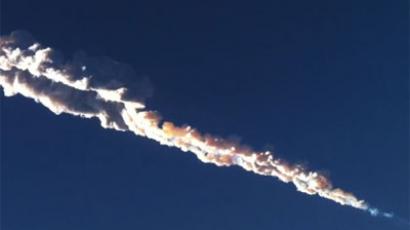Nature’s light show: Perseid meteor shower to brighten sky for two shining nights

Hundreds of fireballs and shooting stars will dart across the sky over the next two nights, putting on a spectacular light show for stargazers. The annual Perseid meteor shower is considered to be one of Mother Nature’s most dazzling celestial displays.
According to NASA, around 90 to 100 bright and colorful meteors can be seen per hour during the meteor shower’s peak, which will take place August 11-12.
As with all meteor showers, the rate is greatest in the pre-dawn hours. Stargazers are expecting an especially impressive show this year because the waxing crescent moon will set early – allowing even the fainter meteors to be seen.
This dazzling annual phenomenon happens when the Earth crosses paths with a trail of debris left over by the Swift-Tuttle comet.
The debris burns up when it reaches the Earth’s atmosphere at a speed of around 160,000 kilometers per hour, which causes shooting stars to appear in the night skies.

Each fragment of debris - which is approximately the size of a dime - brings with it minerals and metals from the parent body, such as sodium, silicon, calcium and magnesium, noted Diego Janches, who studies micrometeoroids at NASA's Goddard Space Flight Center in Greenbelt, Maryland.
"The small meteoroids feed the atmosphere with all these extra materials," he said."They come in, release metallic atoms that get deposited in the mesosphere and then get pushed around from pole to pole by the general global circulation. So by using the metals as tracers, you can answer some important questions about the general composition and movement of the atmosphere."
The Perseids are primarily visible in the northern hemisphere due to the path of Swift-Tuttle's orbit. Meteor enthusiasts in the southern hemisphere will have the chance to observe the shower, although it will not be as vivid.
The comet was discovered in 1862 by American astronomers Lewis Swift and Horace Tuttle. It takes approximately 130 years to circle the sun, and was last spotted in December 1992. The Swift-Tuttle comet is the largest object known to make repeated passes near Earth.
The Perseids have been observed for about 2,000 years, with the earliest information on the meteor shower coming from the Far East. The shower received its name from the constellation Perseus. On the night of its peak, the meteors emanate from a spot in the sky near the constellation.















